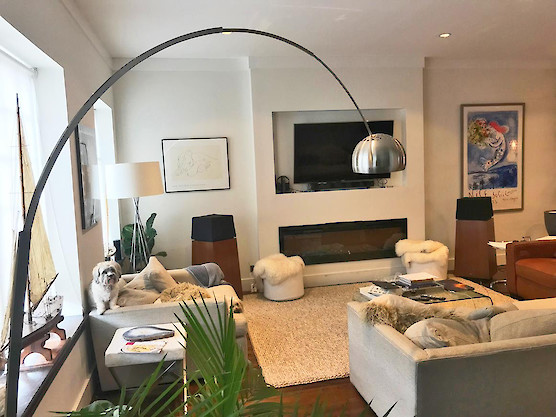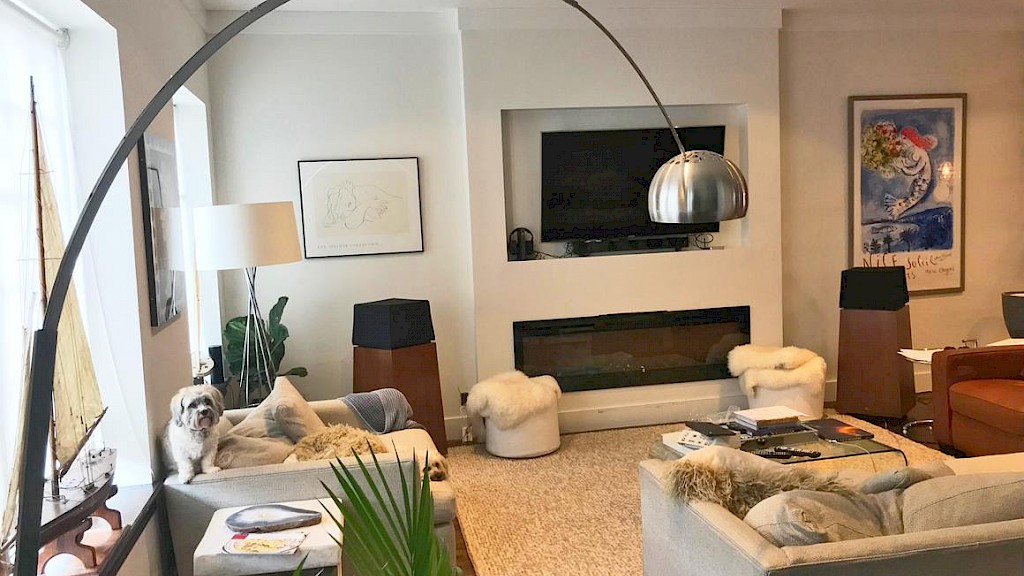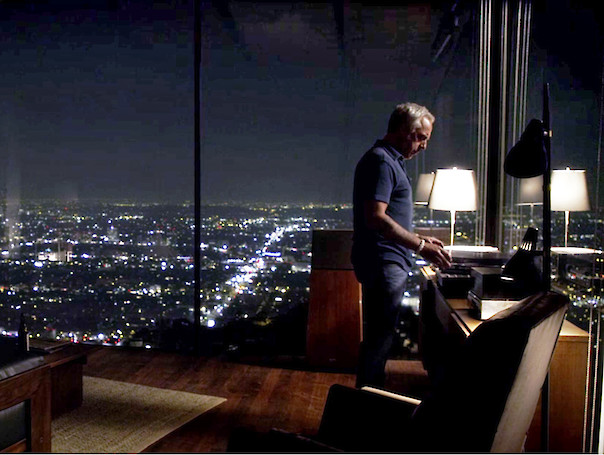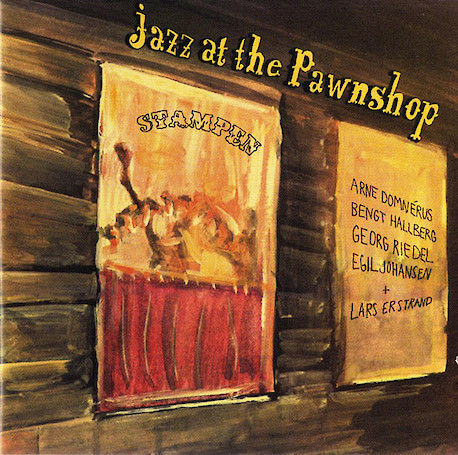How Big is a Big Room?
Bosch Binge: Season 5 on Amazon
I spend a lot of my day thinking about speakers, and I enjoy it. Recently I took a day off and spent very, very little time thinking about speakers. I was engrossed in the new season of Amazon’s Bosch.
This is a detective series based on Michael Connely books. Bosch (Titus Welliver) lives in home with a spectaular view of LA. He enjoys an equally spectacular vintage audio system including a pair of Ohm Walsh speakers. They are Walsh 4s, Walsh 4XOs or one of their upgraded versions. They go with a fine McIntosh system and Marantz turntable.
There are ten new episodes (each of about 50 minutes) in this season. So, the binge was over nine hours long. Each time the Walshs apeared on the scene, I did think about speakers and I smiled.
I enjoyed the books and now the shows. They are recommended highly…
…as are Ohm Walsh speakers of any age.

How big is a ‘big’ room?
These Super Walsh 5.5000 look small in the open-enviroment apartment in Brooklyn even though they are as large as the largest Ohms of today.
Bosch’s home (top image) is what we consider medium size. That size room is ideal for the size Walshs he has.
This open-environment Brooklyn apartment is big. These Super Walsh 5 LEs are the size of the current top-of-the-line Walsh speaker, the F-5015. But, they look small in this room. It is 25’ x 50’ with an 11 foot ceiling for over 13,000 cubic feet – BIG! –yet the Walsh speakers get plenty loud.
We believe the interaction between your room and your speakers has as large an impact on the quality of your music system as all your choices in electronics. This philosophy is the foundation of Ohm’s product line and has been for the last two decades. We do not produce a good-better-best lineup.
We design the best speakers we can for different sized rooms: small, medium or large.
Big rooms require more sound energy for the same listening level than smaller rooms. The larger, more powerful speakers needed for the bigger rooms generally cost more, too.
How big is your room?
We can calculate a number and make a reasonable estimate.
Rooms in homes generally have walls with openings in the walls. These walls, openings, and the placement of the speakers in the room, all have major effects on the bass response. Small, sealed rooms and near-wall placements increase the bass while large rooms, big openings and far-from-wall placement reduce bass.
Room size is actually the internal air volume of the space enclosed by walls (not just the floor area where you’ll be sitting.) Sound will continue to travel until it hits a surface. Therefore, ceiling height has a multiplying effect. (If a room of the same floor area has 12 foot ceilings, it will be 150% the size of room with the same footprint under only 8 foot ceilings.)
Openings into other areas also increase the listening room size. If a wall is half-open into another room, the two rooms will sound like one larger room. So, the combined air volume of all connected rooms is the acoustical size of the room. If adjoining rooms can be closed off with doors, do not include them in your total size.
Useful information
Strangely shaped rooms with openings into other spaces and/or with non-parallel surfaces (like sloped ceilings) tend to sound much better than symmetrical, sealed rooms. Perfectly cubical rooms with all the same dimensions for width, depth and ceiling height are the most difficult to get to sound good.
We optimize the design of our speakers to achieve the balance and sound levels like what we hear from the tenth to fifteenth rows at Carnegie Hall when used in the correct size listening room.
We consider a room with 600 to 1600 cu.ft. of air volume to be small. We would typically recommend either the MicroWalshs or Walsh 1000 Talls.
We consider a room with 1300 to 5400 cu.ft. of air volume to be medium sized. We generally recommend the Walsh 2000 or Walsh 3000 Talls.
We consider a room with 4500 to 8500 cu.ft. of air volume to be large. We generally recommend the Walsh 3000 or Walsh 4000 Talls.
The Walsh 5000 and the Super Sound Cylinder SSC-4900 have controls to allow its use in 800 to 8500 of air volume. The room shown above is pushing things with 13,000 cu.ft.
As you can see, there is a bit of flexibility. Other factors such as type of music, the sound level you prefer, how ‘live’ or ‘dead’ your room is and the distance to the speakers from your main listening position, need to be considered.
A Couple Of Warnings
Do not put a model designed for a big room into a small room. It will have too much bass, sound dull, boomy and over-power the room.
Nor should you put a model designed for small room into a big room and expect to fill the room with quality sound. This mismatch will sound thin and harsh. Plus you are likely to damage the speakers.
We are here, 800-783-1553 to assist in choosing the right speakers for your wants and needs.
Songs to make your speakers sing
Jazz at the Pawnshop
Bosch is into jazz. The music in the show is by Jesse Voccia plus it often features great jazz classics. You can hover your mouse and see what is playing in the background – a nice feature from Amazon. Bosch is also teaching his college-age daughter to enjoy his vinyl-based system. I wish more of us old folks were teaching the next generation to enjoy good music.
Jazz at the Pawnshop may be the best recorded-live jazz record from the twentieth century. It is certainly one of the most popular.
This is an interesting article on the recording sessions: https://forums.stevehoffman.tv/threads/jazz-at-the-pawnshop-whats-the-big-deal.26546/ This recording really transports you to the jazz club. It does not bring the musicians to your room. You-are-there, not they-are-here.
An amusing personal story. I was at the home of a reviewer to demonstrate the original Walsh 5 Limited Edition speakers (like the ones shown above) in 1988. When I was playing Jazz at the Pawnshop, the reviewer stopped the demonstration on three occasions in a very short time to answer his phone even as I protested that the phone was on the recording!
Eight years later, James T. Frane was reviewing the Ohm Walsh 300 Mk-2s (a later version of the Walsh 5 LE and the grandparents of the current Walsh 4000) and said, “The sound of I’m confessin’ from Jazz at the Pawshop (Prophone PRCD 7778) was as if I was looking through a wide doorway defined by the width of the speakers into the performance space. The ambiance and sense of room size were marvelous. The vibes seemed just a few feet away…”
There are many versions of Jazz at the Pawnshop: a few pressing on vinyl, at least five Red Book CDs and even an SACD. They all sound good and there has been much online discussion of their differences. I recommend you get a copy and let the music transport you to Sweden.
Thanks for reading to the end of this April ‘19 edition of our blog – better late than never. See you later this month.
‘Til then,
Good Listening!
John
Subscribe to Ohm News & Views to get the latest posts in your inbox
John Strohbeen Author
John Strohbeen was the President and Chief Engineer of Ohm Acoustics from 1978-2023.




